Anchor Protocol was a project that sought to maintain the yields that crypto users had become accustomed to. It was an ambitious project that generated a lot of hype and rewards as well. In the following guide, we’ll examine how the Anchor Protocol worked and its advantages and disadvantages.
KEY TAKEAWAYS
► The Anchor Protocol was a DApp that offered high yields on UST deposits and relied on an over-collateralized system for lending and borrowing.
► The Terra-Luna ecosystem’s collapse in May 2022 caused the downfall of Anchor Protocol due to its dependency on the algorithmic stablecoin UST.
► Anchor Protocol’s main appeal was the high, stable yields it provided, but its risks included reliance on UST’s stability.
► The failure of Anchor Protocol serves as a cautionary tale for the future of yield-earning mechanisms in decentralized finance.
What is Anchor Protocol?

Anchor Protocol was a Terra-based lending and borrowing protocol. It provided UST depositors up to a 20% annual percentage return. Borrowers could use bonded LUNA (bLuna) or bonded ETH (bETH) to secure UST loans.
It used an over-collateralized architecture to allow users to borrow, lend, and earn interest with their digital assets. The protocol also allowed for fast withdrawals and paid depositors a low volatility rate.
The decentralized savings system offered low-volatile returns on the TerraUSD stablecoin (UST) deposits. Anchor rates were powered by a diverse stream of staking rewards from major PoS blockchains.
Anyone could participate in the protocol. Anchor was a promising savings tool. It was also a decentralized protocol. This means that anyone could join it from anywhere in the world without KYC.
Anchor Protocol origins
Anchor Protocol was founded in 2020 and was headquartered in Seoul, South Korea. It was officially launched on Mar. 17, 2021. Terraform Labs (TFL) is the company that developed the Anchor application. It was designed to work in conjunction with the Terra blockchain and its cryptocurrency, LUNA.
It was TFL’s vision to integrate a few primary financial primitives on the Terra blockchain, including savings via Anchor and payments via UST. TFL’s plan was to integrate three main directives:
- Payments made using UST
- Savings using Anchor
- Investing in the Mirror Protocol
These were all done on the Cosmos SDK-based Terra blockchain. Due to the volatility in crypto assets’ prices, staking didn’t seem like a suitable option for some people at the time.
It paid a dividend based on block rewards from popular PoS blockchains. Anchor assigned block rewards to assets that were used to borrow stablecoins in order to provide a consistent yield.
It was established to increase demand. It offered up to a 20% yield for lenders. Anchor was paired with Mirror Protocol and TFL’s Chai wallets to expand the range of use cases for Terra-based stablecoins. The protocol’s ultimate goal was to become an interchain protocol that allowed its users to access DeFi services in the Terra-Luna ecosystem.
What are stablecoins?
Stablecoins are tokens that peg their value to a fiat currency (e.g., USD) or some other real-world asset (e.g., the price of gold). They have the advantage of withstanding the volatility of the cryptocurrency markets. They also offer great accessibility and mobility. This makes them essentially stable digital currencies.
Stablecoins allow investors to convert their profits into a dollar-equivalent amount. They can then invest the amount elsewhere or withdraw the money to their bank accounts.
These tokens, primarily, enable investors to instantly “cash-out.” This leaves them without worries about how their crypto portfolios may have changed over time due to price fluctuations. It’s a way to avoid some of the instability of the crypto markets.
UST was one of the largest decentralized stablecoins at one point when judged by market capitalization. It was one of the fastest-growing markets of the crypto industry in 2021.
How did the Anchor Protocol work?

In essence, the Anchor Protocol was meant to be a decentralized application that catered to people who want to borrow crypto and receive a stable yield on their deposits.
The Anchor Protocol looked to create a balance between these two purposes through a permissionless and decentralized application. Understanding how Anchor Protocol worked will help us better understand the DeFi landscape. Let’s take a brief look at how Anchor Protocol functioned.
As previously mentioned, the Anchor Protocol followed three main objectives. It completed these objectives using loan liquidation, the bonded assets (bAsset) that we mentioned, and the platform’s money market.
A bAsset can be described as a tokenized claim to a stake on a PoS blockchain. Technically, bAssets could be created on any PoS blockchain that supports smart contracts. This token, just like the asset you staked, would grant you block rewards.
A bAsset was different from a staked asset in that it was fungible and could be transported. This means that bAssets were liquid, just like the underlying asset.
What was Earn? How did it work?
The Anchor Protocol was similar to a savings account in tradfi. The idea would be for users to choose the “Earn” option and then collect the interest without further effort. Because of this, the “Earn” option was the central pillar of the project.
Earn allowed users to earn Anchor yields on Terra stablecoins. You could deposit and withdraw Terra stablecoins from it, and track your current deposit value, transaction history, current deposit annual percentage yield (APY), as well as the amount of Anchor interest earned.
Step 1
The process was simple. Just visit the Anchor Protocol page. Visit the “Earn” section. Once here click on “Deposit” and enter the required details for the deposit.
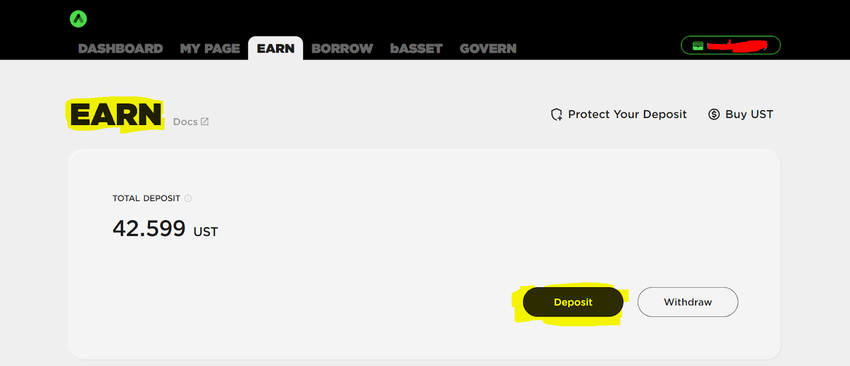
Step 2
If you did not own any UST, you could purchase Luna or UST from an exchange that supported these assets. After purchasing it, you would need to withdraw the sum to your Terra Station wallet.
Sponsored Sponsored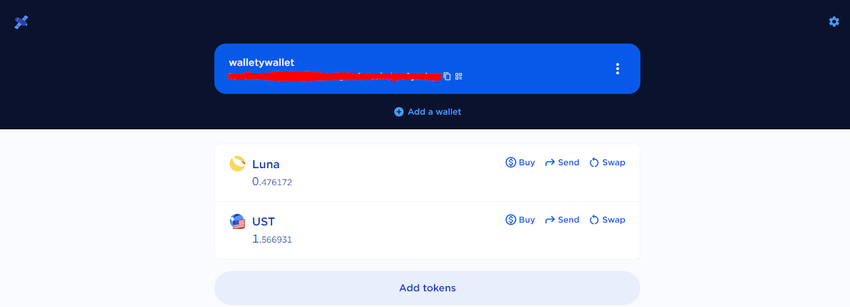
Step 3
You also had the option of using the Terra Wallet to swap from Luna to the stablecoin UST and vice versa.

Step 4
Once you had staked your stablecoin, the interest would be paid to you in an aUST token, which you could convert into UST later. You could then withdraw it whenever you wished without any inconvenience.
Users could deposit stablecoins that were based on Ethereum as well. These included BUSD, USDC, DAI, and USDT. The yields are provided in reference to the Anchor Rate.
What is Borrow? How does it work?
The Anchor Protocol also included the “Borrow” option. This allowed users to apply for loans. To do this, the users needed to initially generate bAssets (bLuna or bETH). They could do this by visiting the “bAssets” tab.
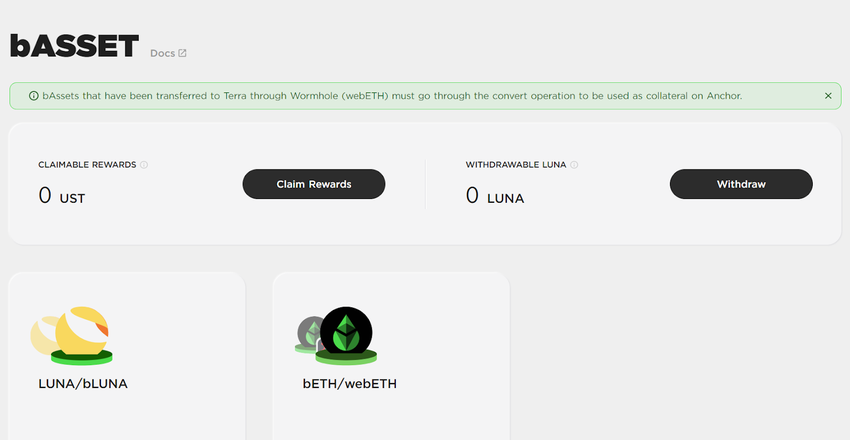
Terra’s money market was a WebAssembly smart contract. It functioned on the Terra blockchain. Terra stablecoins were borrowed and deposited. Terra money market allowed anyone to obtain a loan. However, they had to have the appropriate amount of collateral in order to be eligible for the loan.
Anchor Protocol maintained an algorithm that determined the interest rates for both the borrower and depositor. This algorithm generated interest rates for loans based on current availability and borrowing demand.
In order to lend Terra stablecoins on the Anchor’s market, incentives were provided. Borrowers received the Terra stablecoins through a bAsset collateralized loan. They provided interest to depositors. Furthermore, deposited collaterals generated subsidies.
The “Borrow” element of the Anchor Protocol potentially offered large rewards for users. At a nominal rate, users could borrow stablecoins (UST) against their collateral (LUNA/ETH).

When you wanted to withdraw your funds, you would need to hit the “Repay” button. This allowed you to withdraw the collateral that you have provided. You would then visit the “Bond” tab and “Burn” that collateral.

The platform provided you with two options on the “Burn” tab. With “Direct Burn,” as the name implies, you would have to wait for 24 days to receive your Luna collateral back. The wait time was due to the coin being part of Terra’s staking system.
You also had the option for “Immediate Burn.” With this, you received an instant withdrawal. However, you would need to pay larger fees overall.
Utilizing the Terra blockchain

A Web Assembly smart contract governed the money market on the Terra blockchain. This governed the borrowing and lending system, with the UST stablecoin at its core. Essentially, when you deposited coins on Terra, you were contributing to a pool. The loan interests came from this pool.
Borrowing coins involved providing some coins back as collateral. The exact amount was calculated based on supply and demand within the protocol. Similarly, interest rates were paid out based on an algorithm maintained on the Anchor Protocol.
The algorithm considered the same supply and demand factors. This was the Anchor Rate. In order to determine the rate, the smart contract would split the block rewards obtained from the bAssets acting as collateral between the depositors and the borrowers.
Pros and cons of Anchor Protocol
There were many benefits and risks to using an application like Anchor Protocol. In brief, Anchor had a complex mechanism. Typically, the more complex the issue, the more difficult it is for users to understand the risks.
The upside is that it provided high yields and low volatility during stable times. However, Anchor utilized the UST stablecoin, an algorithmic stablecoin. These types of stablecoins are notorious for depegging.
| Pros | Cons |
|---|---|
| High yield on deposits | Smart contract risks |
| Low volatility | Dependence on UST’s stability |
| Instant withdrawal | |
| Borrow stablecoins at low costs |
Benefits
Anchor Protocol looked to distinguish itself from potential market rivals through a few essential features. First of all, it provided a high yield in exchange for deposits. Furthermore, it allowed for instant withdrawals of funds. Lastly, the interest rate involved low volatility. All of this made it a potentially good savings opportunity.
Users could borrow stablecoins with their assets. They could also buy more of the same asset to increase their leverage. Users could also benefit from low rates by borrowing stablecoins at a lower cost and investing in bAssets with a higher yield than the borrowing cost.
Risks
We’ve looked at the opportunities presented by Anchor Protocol. To fully understand this application, it is important to also look at the risks that were involved. In this case, they refer to two types. The first was the smart contract risk. The second was the risk associated with the UST pegging status.
Smart contracts are an incredible use of modern technology. Still, they are also susceptible to cyberattacks and technology failures. Like any other software code, smart contracts require rigorous testing and appropriate controls to minimize potential risks to blockchain-based business processes.
Hackers may be able to steal money from users if there is a security hole in the blockchain network that hosts a smart contract. The fraudulent activity might not be detected. Hackers can exploit this.
Terra has, however, partnered with various third-party insurance providers to offer plans that reduced the risk of smart contracts and de-pegging. Furthermore, Terra had contracted two audit firms to ensure that the protocol was safe for all its users. They conducted regular audits to identify any potential security issues.
Stablecoin stability
Another risk was the consistent value of the stablecoin. An algorithm calculates the value of UST. The cryptocurrency LUNA backed its value. It was possible that the conversion ratio to the stablecoin could differ when the markets for LUNA were particularly volatile. To bring UST back to $1, the protocol had to burn LUNA. This meant that fewer LUNA were available to sell.
How to use Anchor Protocol?
Anchor Protocol allowed users to benefit in a number of ways. The Anchor Protocol used a number of wallets. However, the easiest method involved using the Terra Station browser wallet. This connected users to applications on the Terra blockchain.
Sponsored SponsoredStep 1
Install your wallet first, then access the Anchor Protocol and choose the “Connect Wallet” option. You would need to scan the QR code and link up your wallet.
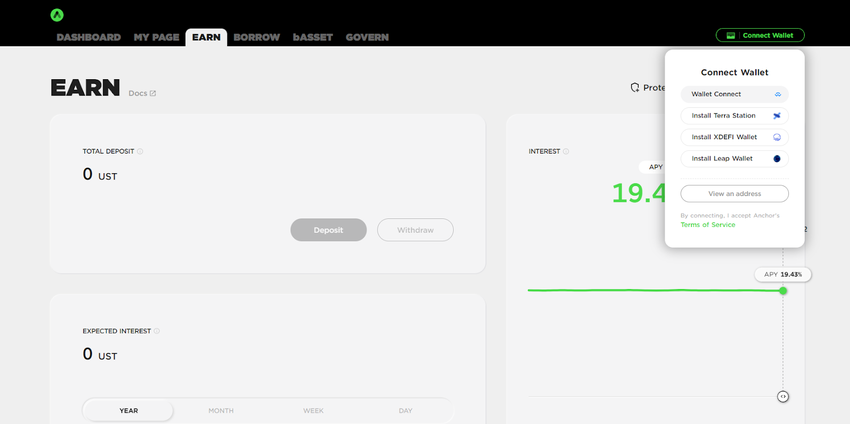
Step 2
Next, you would need to confirm the interaction and connect to the Anchor Protocol DApp. When setting up your wallet, you had to make sure to write down your seed phrase and password properly. Your security information allowed you to access the wallet from any browser on any device.
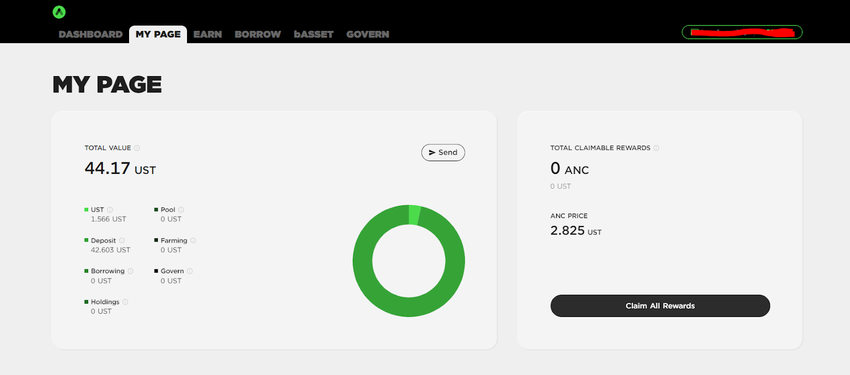
What is the ANC token?
Anchor Protocol’s governance token was the Anchor Token (ANC). The deposited tokens created governance polls. Those who staked ANC could vote on these.
You could buy or sell ANC tokens to become involved in the governance process. The tokens improved reward conditions as well. Finally, ANC–UST pool included the staked tokens.
Tokenomics

The total supply of ANC tokens is 1 billion. You can see the distribution in the chart above and the breakdown below:
- Borrower incentives (40%)
- Investors (20%)
- Luna staking rewards (10%)
- Community fund (10%)
- Team (10%)
- Luna staking airdrop (5%)
- ANC LP (5%)
Should you buy ANC?

As with purchasing any other cryptocurrency, it is important to consider a number of factors. One of these is the volatility of the market. This is inherent to the crypto environment. Any forecast must take this into account. Naturally, the thought process of the coin’s success should also include the success of the project.
However, when it comes to buying ANC, the decision is simple. The price of ANC has dropped significantly since the Terra-Luna crash. It has yet to recover.
Should you use the Anchor Protocol?
When investing in any kind of crypto-related project, it is important to see both the short-term and long-term goals of your investment. However, the Anchor protocol was exploited after the launch of Luna 2.0. It is currently not operational.
The Terra-Luna crash occurred in May 2022 when the algorithmic stablecoin (UST) lost its peg to the US dollar, triggering a collapse in its sister cryptocurrency, Luna. This event caused a significant loss of value across the Terra ecosystem, severely impacting the Anchor Protocol
Anchor Protocol is a case study
Just about everyone involved in the cryptocurrency world is looking for ways to earn extra income and diversify their portfolio. The Anchor Protocol was a popular way to do both at one time.
Due to its dependence on the UST algorithmic stablecoin and the mechanism for supporting high yields, the protocol collapsed. Anchor Protocol should be a case study for future builders on how to implement sustainable yield-earning mechanisms properly.

